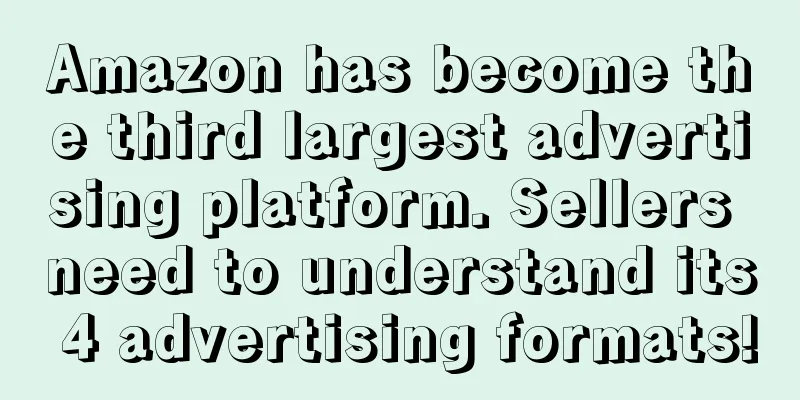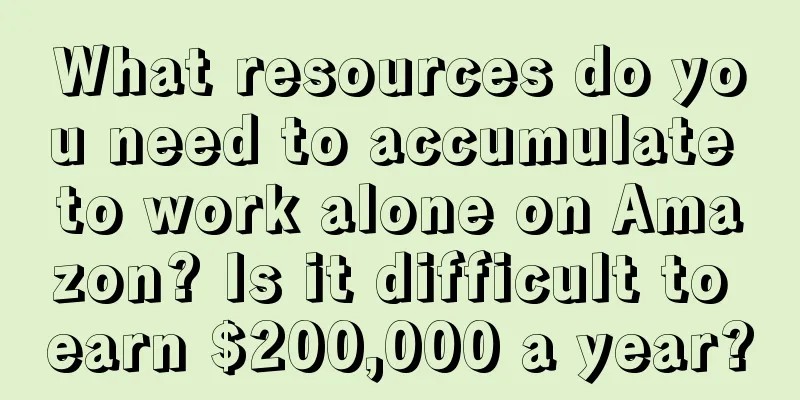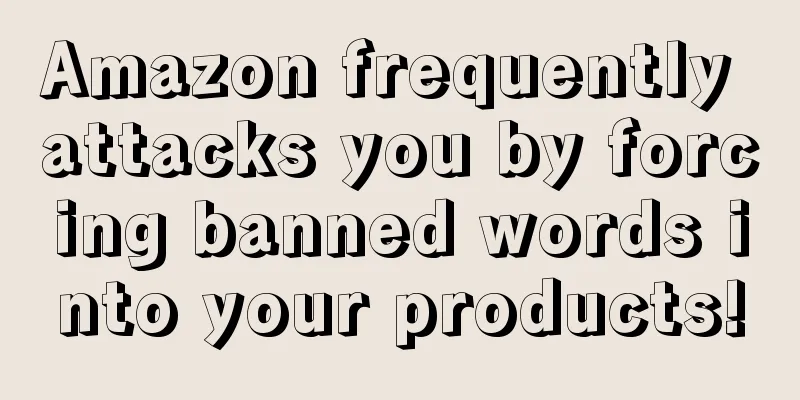Amazon has become the third largest advertising platform. Sellers need to understand its 4 advertising formats!

|
Amazon Advertising’s market share is growing exponentially as more brands turn their attention to it. Brands can no longer ignore the power of Amazon when marketing directly to consumers. Now, more and more buyers start their product searches on Amazon than on Google. Amazon has even grown to become the third largest advertising platform, so there is every reason for sellers or marketers to understand the types of ads on Amazon. Amazon search engine rankings are complex and influenced by many factors. In addition, Amazon has been cracking down on review and ranking manipulation. To stay compliant, sellers who previously focused on fake reviews have moved many of their marketing activities to Amazon Advertising. Instead of focusing on offering discounted products in exchange for reviews, or worse, using incentivized reviews, sellers can try to use Amazon Advertising to get initial conversions. Advertising will increase product sales speed, ultimately help products get reviews, improve product organic ranking and achieve conversions. In addition, sellers can also solve ranking problems by combining Amazon advertising with different promotions offered (such as coupons). Sellers advertising on Amazon, initially after launching your product, you may rely heavily on Amazon advertising to get your product ranked on the first page of search results. However, if your product is optimized correctly, your reliance on Amazon advertising will decrease over time. Still, even if your product ranks highly and has enough sales, your competitors may still be using ads, so you still need to run ads. Sellers should know that the more niche your product is, the less likely you are to be able to advertise on the Amazon platform. However, for most products, the cost of advertising on Amazon is currently significantly lower than other advertising platforms, such as Google Ads. Amazon gives sellers a way to get their products in front of consumers at a much lower cost than competing advertising platforms. You can start by advertising your best-selling products and measure your ROI before adding other products. Amazon Advertising has undergone various changes over the past few years. Recently, Amazon renamed some of their advertising services. Here are the four types of advertising you can run on Amazon: 1. Sponsored Products This is the most popular form of advertising on Amazon. For many years, brands have been using this powerful tool to automatically and manually target buyers. Sellers can use different audience matching types, including broad match, phrase match, and exact match, as well as negative keyword matching. Amazon SC (Seller Center) accounts, VC accounts, and KDP platforms (self-service digital publishing platforms) can all participate in the Sponsored Products advertising program. Amazon has been rolling out additional targeting options on its Seller Central, such as product targeting, interest targeting, and category targeting.
While the ad type mimics the Google Ads platform, there are some subtle differences with Sponsored Products. Before setting up your campaign, check the following to ensure your campaign is set to run successfully: (1) Own the Buy-Box If you don’t win the Buy Box for a product, your ads won’t run. This means that if a brand sells a product directly and the Buy Box winner is a third-party seller, the brand won’t be able to run any Sponsored Products ads for the product. Before creating a campaign, I recommend checking your product’s current Buy Box ratio. You can check your Buy Box ratio through the Detailed Page Sales and Traffic by Child Reports: In Seller Central, go to Reports > Tab > Detailed Sales and Traffic. Here you can see if you have a larger percentage of the Buy Box to advertise. If your product has a "suppressed" Buy Box, then it is possible that you are the only seller of the product but still do not have the Buy Box. To protect the user experience, Amazon sometimes suppresses the Buy Box because the platform believes that the price of the product is too high or it believes that the product can be purchased at a cheaper price on another website.
(2) Keyword index Your ads can only run if the keywords are relevant to the product, and the product needs to be indexed for the keywords being targeted. Sellers can use tools to check keyword indexing on Amazon, and you can also check keywords manually and search for ASINs by indexing keywords. Some Amazon PPC agencies are using keywords and automating Sponsored Products campaigns to verify indexed keywords. 2. Sponsored Brands Advertising Program Headline Search Ads was officially renamed Sponsored Brands in September. This advertising plan is applicable to SC accounts that have passed brand registration or VC accounts that have registered their own brands.
Sponsored Brands is a powerful feature that allows sellers to add banner ads at the top, bottom, and sidebar of the search results page. Sponsored Brand ads, like Sponsored Products ads, allow you to target shoppers based on keywords. But unlike Sponsored Products, Sponsored Brand ads give you creative control where you can add your desired brand tagline and feature three products in your ad. You can also direct shoppers to other pages, including: Custom pages on Amazon that contain the different products you want to sell. A brand or store page that you can create on Amazon to represent your brand or store. Sponsored Brands can also position similar products and take market share from your direct competitors. 3. Product display ads Product Display Advertising is different from Sponsored Products or Sponsored Brands Advertising in that it is a different form of advertising. Typically, you’ll see lower conversion rates for Product Display ads than for Sponsored Product and Sponsored Brands. However, these ads can be very effective in certain markets, including the book industry. Product Display Ads and Sponsored Products Ads are two advertising options that publishers can directly place on the Amazon KDP platform.
The main advantage of Product Display Ads is that you can promote your products directly on your competitors’ product listings. Your ads will even be displayed below your competitors’ Buy Box. If you have a variety of similar products that you are trying to cross-sell to your Amazon customers, then using Product Display Ads will be effective. If you have five products in your brand, you can show ads for four slower-selling products on top of your main product listing. This keeps people from leaving the main product detail page and checking out other products on your brand. 4. Amazon Advertising Demand-Side Platform (DSP Platform) While the first three ad formats on Amazon are popular among advertisers, the Amazon DSP platform is for big brands that want to build awareness for their brands. The platform allows sellers to access Amazon audiences through the app. Ad formats include: Banner ads on mobile devices; Video ads; Mobile device interstitial ads; Desktop advertising; Mobile web display ads. The Amazon DSP program is the only way for advertisers to buy ads on Amazon. While it is a great platform for marketing your products, be aware that it is unlikely to directly generate sales. The Amazon DSP App also gives you access to video ads, but sellers targeting the Amazon platform don’t typically use videos. These videos are more about traditional marketing, where the goal is to build brand awareness rather than increase sales through a single ad. While Amazon advertising programs are constantly evolving, we have found over the years that these advertising services have brought tremendous benefits to advertisers. Using these services can help you gain more market share, increase brand awareness, and help you better utilize Amazon as a customer acquisition channel. Because Amazon reduces the friction of initial product purchases, it can be a great way to expose your products to new audiences. Amazon Advertising can help you generate the conversions you need, helping you collect reviews organically and improve your organic ranking on Amazon. Advertisers can combine different advertising methods on Amazon to get their products in front of millions of buyers. Text ✎ Mary/ Statement: When reprinting this article, the title and original text must not be modified, and the source and original link must be retained. |
<<: How to use the FBA calculator
>>: What to do if your Amazon listing is hijacked? Here are some solutions and prevention tips
Recommend
Amazon people are positive and cute during the epidemic!
A sudden outbreak of the virus disrupted many peop...
What is JioMart? JioMart Review
JioMart is an online retail service launched by Re...
Can sellers also file AZ complaints with Amazon? !
beginning Let me first ask all sellers what is th...
About 17,630 units sold! Domestic car cleaners are urgently recalled!
<span data-shimo-docs="[[20,"获悉,据外媒报道,2月9日...
Etsy seller benefits! Enjoy 73% discount when shipping with UPS!
It is learned that according to foreign media repo...
What is Kingsons? Kingsons Review
Kingsons was founded in 1997, mainly engaged in ba...
What is inkFrog? inkFrog Review
inkFrog is a website that helps sellers sell on eB...
What is BIS certification? BIS certification evaluation
BIS certification is the ISI certification issuing...
The holiday shopping rush is coming! 86% of American consumers choose to shop online!
According to TreasureData's latest survey of 1...
What is Synuco? Synuco Review
Xinnuoan (Shenzhen) Technology Co., Ltd. focuses o...
A large number of Americans are updating their wardrobes! Clothing retailers have strong growth momentum in Q1!
According to foreign media reports, as Americans r...
Another track of Amazon has become popular, and many big sellers have unlocked the secret to explosive sales!
According to the data from the General Administrat...
What is the difference between Amazon's "Variant Merge" and "Merge"?
In the operation strategy of the Amazon platform, ...
Sellers panic, Amazon traffic plummets 30%
As the spring promotion came to an end, many sell...
Freight forwarding industry is in turmoil! More than 170 containers were seized and a large number of accounts were exposed
Not long ago, Amazon announced that it will implem...









